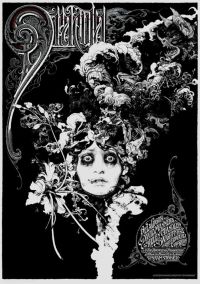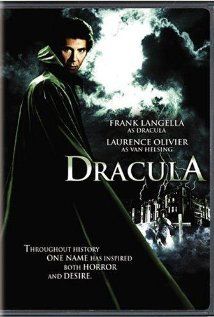A guest post by Kim May.
 To some the idea of changing a classic story may be sacrilege. However, there’s nothing wrong with giving a classic a good literary facelift. Take Dracula for instance. This ancient tale has had so many facelifts that it’s become the Joan Rivers of fiction. Really it is. Look at its journey: Eastern European myth and superstition -> Le Fanu’s Carmilla -> Polidori’s The Vampyre -> Bram Stoker’s Dracula -> hundreds of film and stage adaptations (including two musicals) -> NBC’s upcoming TV adaptation.
To some the idea of changing a classic story may be sacrilege. However, there’s nothing wrong with giving a classic a good literary facelift. Take Dracula for instance. This ancient tale has had so many facelifts that it’s become the Joan Rivers of fiction. Really it is. Look at its journey: Eastern European myth and superstition -> Le Fanu’s Carmilla -> Polidori’s The Vampyre -> Bram Stoker’s Dracula -> hundreds of film and stage adaptations (including two musicals) -> NBC’s upcoming TV adaptation.
I could write a book discussing each version but for the sake of time I’ll limit myself to my two favorite film adaptations – The classic 1931 Dracula, starring Bela Lugosi, and the 1979 Dracula, starring the very sexy Frank Langella. Both adaptations were based on Stoker’s novel and while they don’t follow the novel faithfully, they do have all the elements that we associate with the story of Dracula.
Most of the characters from the novel are present. After arriving in England, Dracula wastes no time moving into Carfax Abbey (AKA the Adams family summer home) and turns the damsel’s best friend into his first late night snack (vampires love fourth meal). Van Helsing outs the Count as a vampire, using traditional methods. With the help of the young hero, Van Helsing destroys Dracula’s first British vampire bride, formerly known as the damsel’s best friend (I believe this makes her second life shorter than Bree Tanner’s). Dracula then turns his attention to the damsel, later absconding with her. The hero and Van Helsing pursue and kill Dracula, saving the damsel and the world.
The heroes in both films also employ the traditional countermeasures for vampires – the crucifix, holy water, sacred ground, a wood stake, mirrors, garlic, and wolfsbane – and the trademark line “Children of the night. What (sad) music they make”.
One would think that with so many similarities the films would be almost identical. They’re not. The scriptwriter(s) put their own spin on the story, characters, and the vampire mythos.
For the most part the 1931 film doesn’t stray very far from Stoker’s story. It also portrays gender roles in a very traditional way. The women are demure and meek while the men are the ones who are truly in control. In today’s eyes that sounds terribly chauvinistic but you have to remember that the bra burning feminist movement was a few decades away and the writers primary goal for this film wasn’t to promote equality. It was to frighten the audience. While such stereotypes are a bit disturbing, only the most ardent of feminists would find it terrifying.
The base story is a bit terrifying to begin with because it preys on mankind’s instinctual fear of dangerous creatures that creep in the dark. However, since the previous film adaptation, Nosforatu, relied on that (with successful results) the writers upped the ante. They did this by giving the story a modern (1930s) setting. The actors wore the fashions of the day and many scenes have telephones, electric lamps, and battery operated flashlights in them. While this seems like a small change, it does make the story more relatable.
“What if?” is a powerful question. It increases the tension and gives the audience room to wonder if this was real. Could a vampire actually terrorize the city or turn Sally’s pet bunny into a sanguinarian? Was that rustling sound a leaf on the wind or a vampire sneaking up on them? The audience’s minds work against them and makes every scary moment more powerful.
 In contrast, the 1979 film is not designed to scare the audience, though they still made it relatable in another way. In the late 70s there were a higher percentage of college graduates than there were in the 30s so the modern setting trick wasn’t going to be as effective. The various popular re-tellings of Dracula, of which the 1931 film is one, made the public very familiar with the story. So with this in mind, the writers set out to make the vampire mythos logical. When it’s discovered that the crates Dracula shipped from home were filled with soil, his explanation that he has an interesting botany gives the characters reason to believe him to be a normal human rather than one of the undead. The audience still knows the truth of course, but none of the characters look like idiots for believing the lie.
In contrast, the 1979 film is not designed to scare the audience, though they still made it relatable in another way. In the late 70s there were a higher percentage of college graduates than there were in the 30s so the modern setting trick wasn’t going to be as effective. The various popular re-tellings of Dracula, of which the 1931 film is one, made the public very familiar with the story. So with this in mind, the writers set out to make the vampire mythos logical. When it’s discovered that the crates Dracula shipped from home were filled with soil, his explanation that he has an interesting botany gives the characters reason to believe him to be a normal human rather than one of the undead. The audience still knows the truth of course, but none of the characters look like idiots for believing the lie.
Since the writers didn’t need a modern setting, they placed it at the beginning of the twentieth century – the same time period as Downton Abbey – so it would resonate with fans of the gothic romances that were popular in the 70s. What they updated instead, because the successful women’s rights movement, was the gender roles. The men are still very much in control of the world, but Lucy, our damsel, is an intelligent, assertive, and passionate woman. Despite the best efforts of the men around her, Lucy has no compunction telling them that she is not a victim and is the only one in control of her future.
Speaking of Lucy, her role in the tale is one of the biggest deviations from Stoker’s novel. He wrote Lucy as our fair damsel’s best friend and the first victim of Dracula. However, in this film the roles were flipped with Mina, the damsel, being the friend and victim and the new, improved Lucy being the Count’s love interest.
In keeping with the romantic theme, Dracula was portrayed as the lonely, tragic survivor instead of a monster. This transforms him into a sympathetic character. So instead of cheering Van Helsing and company, we cheer on Dracula and Lucy as they try to escape so they can live together in peace. It’s quite brilliant.
Both of these films successfully updated a classic without losing the charm or the appeal of the original. I’ll even go so far as to say they made the mythos richer as well. So you see, literary nip/tucks can be a good thing.
* * *
Kim May writes sci-fi and fantasy but has been known to pen a gothic poem or two. She works at an independent bookstore and dog/house sits on the side. A native Oregonian, she lives with her geriatric cat, Spud, and spends as much of her free time as she can with family and friends. She recently won The Named Lands Poetry Contest. If you would like to find out what she’s working on, please visit her blog.
